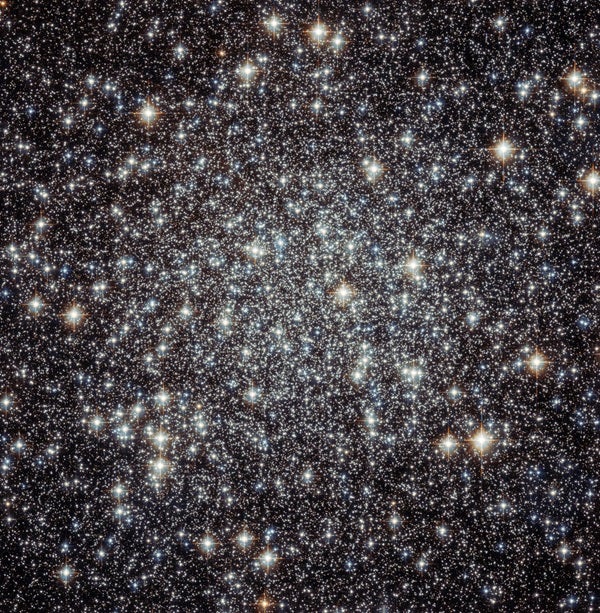The stars in a globular cluster are 50 times closer to each other than the stars in our solar neighborhood. To put this in perspective, in a typical globular star cluster, we’d likely find stars separated by a distance 5,000 times greater than the Sun is from Earth. But even at these distances, the magnetic fields of individual stars would have little effect on each other.
If you were flying through the core of a globular cluster, you likely wouldn’t need sunglasses because even at these close separations, individual stars would still appear dimmer than our Moon. But given that you’d have many stars in close proximity to each other, there would be nearly 1,000 stars brighter than the planet Venus in the nighttime sky of any fictitious planet near the center of a globular cluster. Their combined light would add up to roughly the light of a Full Moon.
In the center of a globular cluster, conditions aren’t favorable for the formation of planets because the tidal forces of passing stars could destroy any protoplanetary disks. If a planet did somehow form, it would still find itself in danger, since the occasional close passage of a star would likely disrupt the planet’s orbit, flinging the planet into interstellar space.










